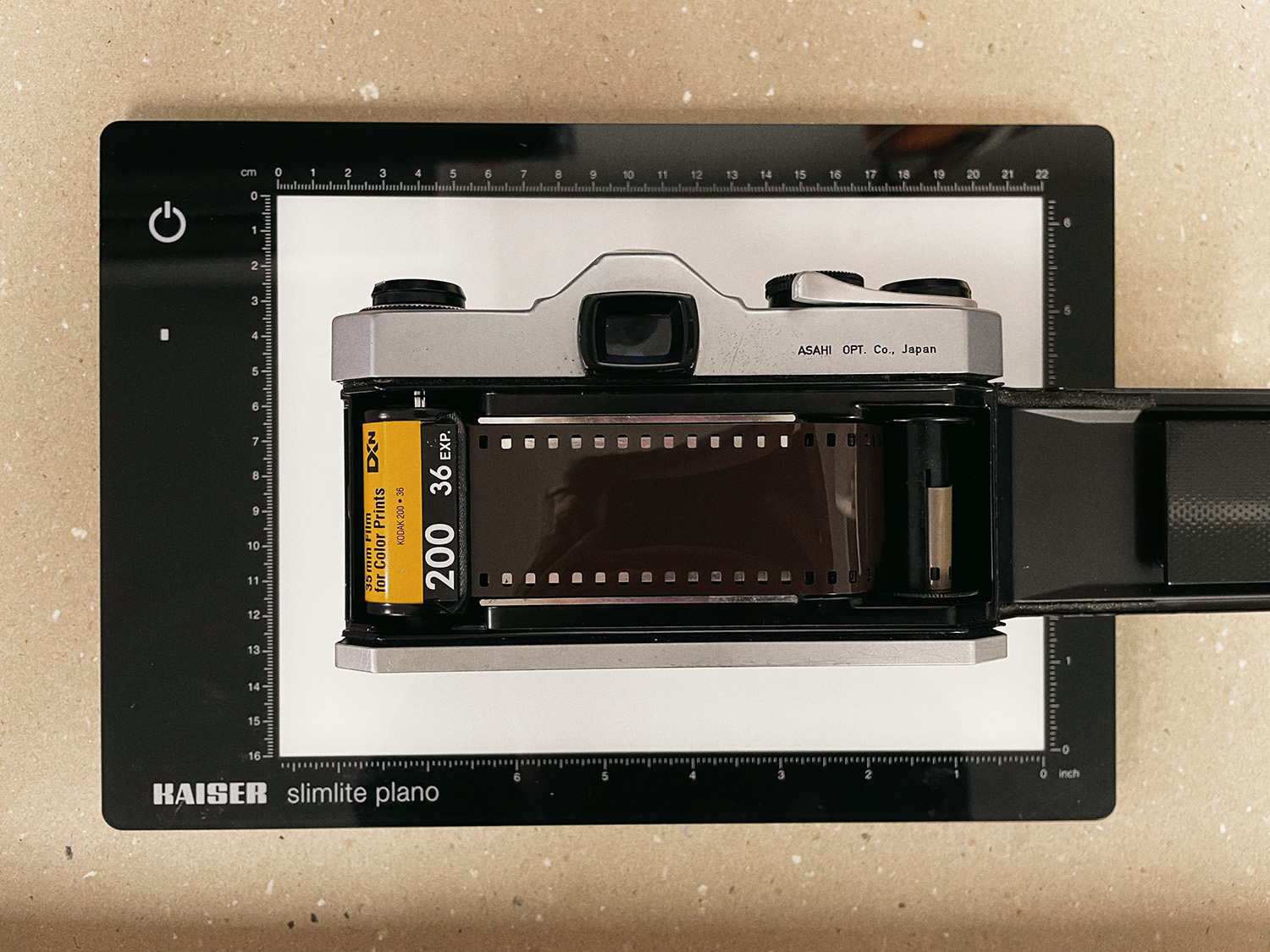Blank film: why?!
Published :
11/20/2025 12:00:36
Categories :
Lab news

PHOTO NOT FOUND
4 reasons and tips to go from 0 to 36 photos
Lab nightmare: you dropped off your film at your favorite lab (us), and we sadly tell you that there isn’t a single image on it after development. What happened? We know, it hurts, but don’t worry: we’ve all been there!
Film photography can play tricks on us, so to avoid future heartbreak, here are our expert tips to make sure it doesn’t happen again. And for every problem, there’s a solution.

The film didn't move
If the frame counter stays at zero or spins freely, and you don’t feel any tension when winding: your film wasn’t properly attached to the take-up spool.
When loading a 35mm SLR, you insert the film leader into the take-up spool slot, then wind and fire twice to advance past the blank frames. If the film is properly engaged, it should begin wrapping around the spool.
To be sure it stays tight and doesn’t slip off, it’s essential to manually check that everything advances before closing the camera.
→ Team tip:
After closing the camera, check that the rewind knob turns when you wind. You should feel resistance as the film advances.

Shutter or exposure issues
The film has moved forward, but no light hit it. A stuck shutter or curtain, dead batteries, a tired mechanism… and your developed film comes out completely clear.
Exposure-wise, a totally underexposed film due to incorrect ISO settings, for example being off by 10 stops (like shooting a 400 ISO film at 25,600 ISO), can also result in a blank roll. A flash left “off” in low light (e.g. on a disposable), or poor flash sync, can also give you a fogged or blank film.
→ Team tip:
Test the shutter at all speeds before loading a roll and listen for differences. If something feels off, ask your lab or a repair tech for advice.
For electronic cameras: always check the batteries. A quick test before shooting can save your roll!
Check your ISO dial before every session. And remember: film loves light, always try to compensate in difficult scenes.

Expired film
Feel like experimenting with an expired roll found in a garage or thrift shop? Tempting, but risky! A film that’s 20, 30+ years old and poorly stored may show absolutely nothing after development.
→ Team tip:
Choose expired rolls only when you know how they were stored, and avoid using them for important memories. Overexpose, and warn your lab in advance so they can adjust development. You might still get beautiful surprises!

Errors or issues during development
In manual development: wrong chemistry mix, bath inversion, temperature too low…
In machines: sudden breakdown with films still inside…
At home or in the lab, anything can happen, though it’s rare.
→ Team tip:
Keep notes on times, temperatures and chemistry use.If you have doubts about a roll or your camera, let the lab know.

Bonus: How to make a good diagnose?
Clear film + sharp frame numbers = film was never exposed
Clear film + faint or missing numbers = chemistry issue
Very fogged film with no images = extreme underexposure or a partially stuck shutter
5 good habits to adopt
Check that the rewind knob turns.
Test the shutter.
Double-check ISO settings.
Rewind properly at the end of the roll.
Don’t hesitate to ask your lab for help.
→ In film photography, zero risk doesn’t exist!
But don’t give up after your first blank roll. The goal is to learn by practicing, having fun, and improving with every new film — trust us, we’ve all been there.
And at Nation Photo, all is not lost: for every blank roll, you receive a voucher for your next development at the lab.